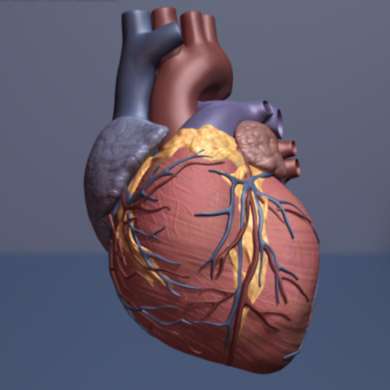Unmarried adults with heart disease living in rural areas face more hopelessness, increased risk of death

Living in a rural setting and being unmarried were each linked to higher rates of hopelessness among people with heart disease, according to new research published today in the Journal of the American Heart Association, an open access journal of the American Heart Association.
The study is the first to explore whether living in a rural setting is a significant risk factor for hopelessness. National statistics indicate U.S. adults—those with and without cardiovascular disease—who live in rural areas have higher rates of death than those who live in urban communities. Many known risk factors for heart disease—high blood pressure, obesity, cigarette smoking and low levels of physical activity—are also more prevalent among people who live in rural settings.
Feelings of hopelessness, whether it’s a temporary response to a new event (a state), or an ongoing outlook toward life (a trait), are also linked to the progression and development of heart disease. Up to half of people with heart disease report hopeless feelings, and hopelessness can more than triple the risk of death or heart attack. And, while living in a rural area and hopelessness are each linked to heart disease, this study is the first to examine whether living in a rural setting affects hopelessness.
“That is what makes our findings so surprising,” said the study’s senior author Susan L. Dunn, Ph.D., R.N., FAHA, an associate professor and department head in the department of biobehavioral nursing science at the University of Illinois in Chicago. “We found that living in a rural area is a risk factor for hopelessness. Because we know hopelessness is predictive of death in people with heart disease, health care professionals need to recognize the subgroups who are most at risk and provide guidance and treatment.”
Researchers collected data from 628 adults at two hospitals in South Dakota and one hospital in Michigan. Participants were 18 years or older and had been diagnosed with a heart attack or severe chest pains (angina) or had undergone procedures to open clogged heart arteries (surgery or stent). About 25% of the study’s participants lived in a rural area. Overall, roughly one-third were women; about two-thirds were married and most (92%) were white. About half of the participants had a history of cardiovascular disease, and one-fourth suffered from depression.
Researchers used the State-Trait Hopelessness Scale, a self-reported questionnaire measuring a negative outlook and sense of helplessness toward the future, with higher scores equating to increased feelings of hopelessness.
Because hopelessness and depression are often associated yet distinctly different, participants also completed a questionnaire to measure the severity of their depression. In addition, decreased physical function is linked to feelings of hopelessness, so participants completed another questionnaire to gauge their ability to perform daily physical activities. Finally, researchers categorized where participants’ lived using census tract-based data.
Researchers found:
- Levels of state hopelessness (sparked by a new life event, such as a heart event) in adults with heart disease living in rural areas were 10% higher than among urban adults (58.8% to 48.8%, respectively).
- Levels of trait hopelessness (overall outlook on life) were relatively similar among rural and urban adults (59% to 55%, respectively).
- 20% more unmarried participants in rural areas experienced state hopelessness than their married, rural counterparts.
The authors suggest additional research is needed to assess whether adults with heart disease living in rural areas continue to have higher levels of state hopelessness than those who live in urban areas after hospital discharge and throughout their recovery. The connection between marital status among people living in rural areas to feelings of hopelessness is also important for future studies.
The study also has several important limitations. The sample size was small and included people living in the Great Lakes and the Great Plains regions, so more research is needed to examine rural and urban differences in various geographic regions throughout the U.S. and in the rest of the world. There was also limited racial and ethnic diversity among participants in the study, and unmarried partners who lived together were not specifically categorized.
Source: Read Full Article
